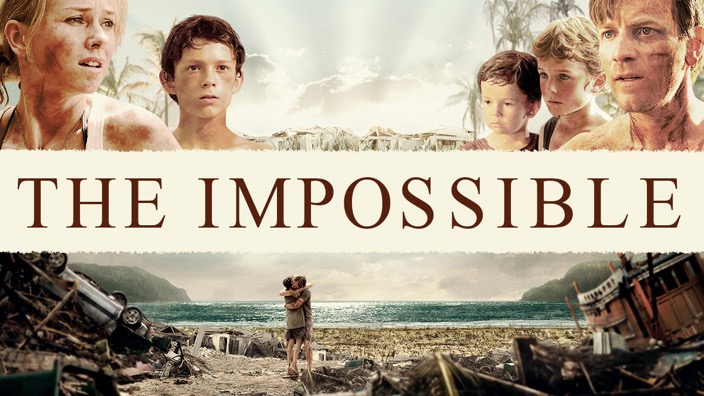Is the world really going to end? Not if Gerard Butler saves it in time – on the big screen.
The 48-year-old Scot has done some serious work saving us from destruction in Olympus Has Fallen (2013) and its sequel London Has Fallen (2016). In Geostorm (2017), the buff actor extends his resume to play an architect scientist of a global satellite system that stabilises the Earth’s weather conditions. Due to insubordination, he is fired. Three years later when a severe snowstorm in an Afghanistan desert freezes people to death, Butler gets recalled to check for malfunctions. What happens next is the uncovering of a government conspiracy, and Mother Nature wreaking havoc on Earth.
In this CGI-laden movie, there are countless scenes of heatwaves and thunderstorms tearing through various countries across the world. Terrified (and helpless!) human beings stop in their tracks to witness the terror falling from the skies – we are guessing they didn’t survive to see Butler save the world.

Why do audiences keep lapping up disaster flicks like Geostorm? We offer some reasons, and hope that we will never live to see burning fireballs fly past our window.
Big…earthquakes…storms…explosions…good…

No one watches a disaster movie hoping to be inspired by an award-winning screenplay. When it comes to dramatised disasters, most viewers have this chant in their minds: “Give me action. Give me action. Give me action.”
Ever wondered what will happen to the human race if we don’t take care of the planet? Look no further than Roland Emmerich’s The Day After Tomorrow (2004). The blockbuster shows the catastrophe that happens after the North Atlantic Ocean disrupts. Say hello to the new Ice Age when a series of extreme weather events result in global cooling. Don’t worry if you fell asleep in Geography class because everyone’s here to see how Dennis Quaid and Jake Gyllenhaal save the world, not to learn more about climate change.
You’ve read a lot about volcanic eruptions. How about seeing one up close on screen? In Pompeii (2014), Paul W.S. Anderson envisions what it was like when Mount Vesuvius erupted in 79 A.D. The unfortunate natural disaster destroyed Pompeii, a city of the Roman Empire. Kit Harrington may know nothing as Jon Snow in the TV series Game of Thrones, but watch the 31-year-old actor become a bona fide action movie star as he escapes collapsing roads and buildings in this historical disaster blockbuster.
Of flying cows and scary monsters

Disaster flicks allow special effects artists to be gainfully employed. Over the decades, viewers have seen how visual effects have evolved to make thrilling movie moments possible.
More than 20 years ago, we were given a glimpse into the dangerous work done by storm chasers. The late Bill Paxton and Helen Hunt play the protagonists of Jan de Bont's Twister (1996), a disaster adventure movie about researching tornadoes. The most memorable scene (for us, at least) is seeing a cow fly through a tornado. Thanks to special effects, this hilarious but true depiction of what may happen to poor farm animals is brought to screen. We suppose people preferred aliens to flying cows, because the movie lost out to Emmerich’s Independence Day in the Best Visual Effects category at the 69th Academy Awards.

With the advancement of technology and a large dose of ingenuity, Matt Reeves made monsters scary again in Cloverfield (2008). Viewers shuddered as they watched ‘found footage’ shot with a home camcorder. People are running hysterically, and there is screaming everywhere. But where exactly is the monster, and when will you get a full view of it? Critics and audiences loved the well-executed suspense. The seemingly humble movie was a success, making $170.8 million at the box office against a $25 million budget.
Hope survives

Whether or not disaster movies are based on true life events, they usually end on a positive note. After all the exciting and terrifying moments, viewers often feel inspired as most of these movies wrap up with a feel-good message of hope and resilience.
If there’s one actor who can use his voice to arouse emotions, it’s Morgan Freeman. In the last scene of Mimi Leder’s Deep Impact, Freeman’s President Beck encourages his people to remember and honour those who have sacrificed themselves to save the world, and be thankful that there is a second chance for Earth. Viewers may be left with misty eyes, and forget that the movie is about a comet threatening to cause a mass extinction.
Juan Antonio Bayona’s heartbreaking film The Impossible (2012) is based on the experience of a family in the 2004 Indian Ocean tsunami. For almost two hours, viewers experienced the ordeal faced by real-life characters portrayed by Naomi Watts, Ewan McGregor and Tom Holland. The scenes were excruciating and painful to watch, but there was a dash of hope in the movie’s last scene. As Watts takes a last look at the chaos left behind by the tsunami, there is a sense of optimism knowing that the family is reunited after going through a series of trials and tribulations.









